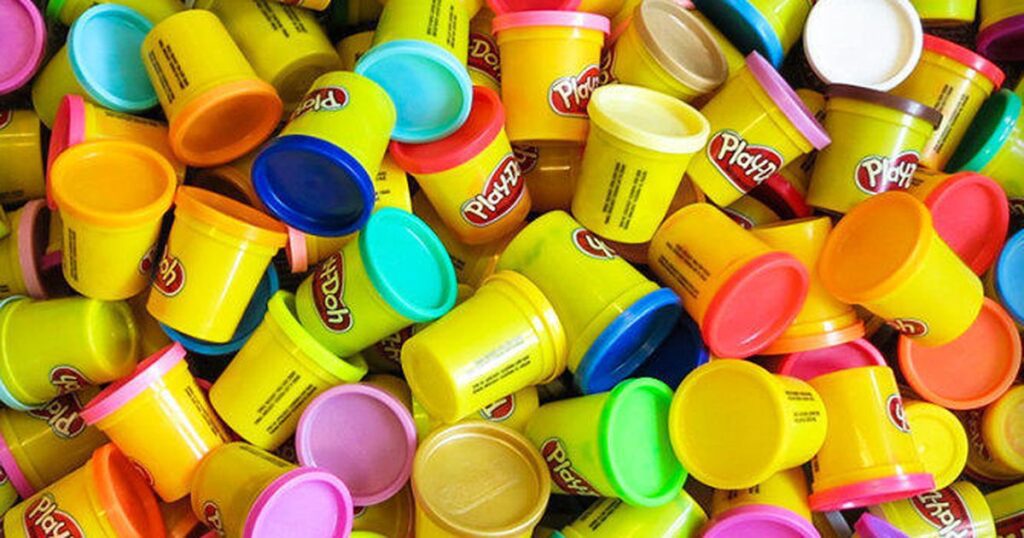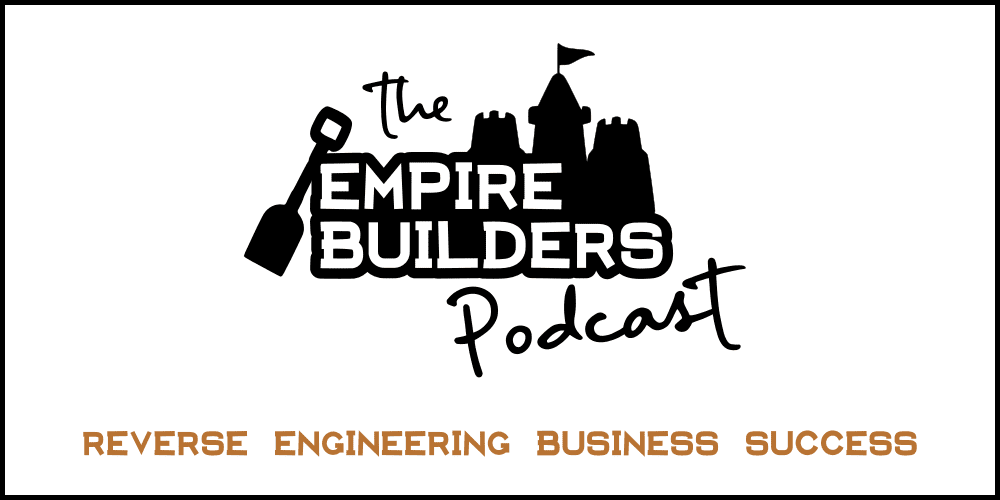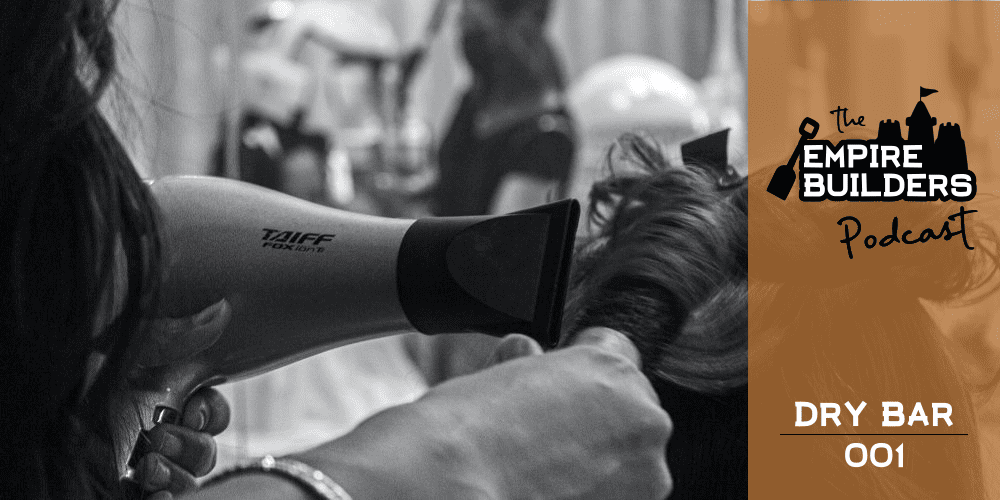Play-doh, seriously, it was not a toy. This is serious stuff. Learn how observing how your customer is using your products can lead to new product ideas and maybe even save your company. You will also learn the mystery of how they created the name. The first idea was doozy.
David Young:
Welcome to the Empire Builders podcast, teaching business owners, the not-so-secret techniques that took famous businesses from mom and pop to major brands. Steven Simple is a marketing consultant, story collector, and storyteller. I’m Steven’s sidekick and business partner, Dave Young, before we get into today’s episode, a word from our sponsor, which is, well it’s us, but we’re highlighting ads we’ve written and produced for our clients. So here’s one of those.
[Peak PTT Ad]
David Young:
Steven, another big old flash from the past right today. You’ve taken me back to my childhood. Is that what I understand?
We’re going to play with some Play-Doh.
David Young:
Oh God, I’m hungry anyway.
Steven Semple:
Don’t eat the hot dogs that you make, you’re not supposed to eat that.
Steven Semple:
Here’s the thing, it’s amazing, we sometimes forget about things like Play-Doh. So Play-Doh’s now owned by Hasbro, has been for a number of years. They still sell 95 million cans of Play-Doh a year.

David Young:
95 million cans of it.
Steven Semple:
95 million cans a year. And when there was a bunch of marketing companies got together a while ago and created this list of the most memorable brands in the world and number 24 was Play-Doh. Mark it in your calendar, September 18th is national Play-Doh Day.
David Young:
Oh, sweet. That’s nice. They have their own day.
Steven Semple:
So when you have your own day, you’re kind of a bit of a deal.
David Young:
Yeah. I mean, it’s a foundational toy for most of us, right? We all remember playing with Play-Doh.
Steven Semple:
And here’s the interesting thing, it didn’t start as a toy. Didn’t start as a toy. So, if we go back to 1920, there’s a company called Kutol and it was founded by Cleo McGyver, McGyver, not MacGyver, McGyver, and it was a soap and cleaning product. And basically houses at that time were heated by coal, so there was lots of soot. And what was really popular in that time was wallpaper. Wallpaper was much more popular than painting. So, you basically had a house, it was heated by coal wallpaper on it, lots of soot, and basically, Kutol sold all these products basically to different grocery stores. And what happened is Kroger basically said to them, “Hey, do you have a cleaning product that would clean soot off of wallpaper? Did you have something like that?” And he said, “Sure, I do.” And they signed a contract and then he went, “You know, this is really good news because we’ve been a struggling business about to go bankrupt. We now got this great contract from Kroger.”
David Young:
We just got to figure out…
Steven Semple:
We don’t have a product. So he went to his younger brother, Noah, and he said, “Can you make a product? I got an order. Can you make a product?” So, they created this putty pliable, like substance that you would basically roll on wallpaper and would collect the soot off the wallpaper and had cleaning product in it and whatnot. And it would clean the wallpaper. And the product did gangbusters in the company made tons of money until suddenly the 1950s come along. And you know what happened in the 1950s? Oil and gas, no longer coal. Way cleaner. Soot went way down, also a trend away from wallpaper to painting. But the big thing is, you didn’t need this cleaning product. So demand went, boom, like this. So for the second time in the company’s history, first time is struggling and they get those order from Kroger and they make this product. They’re now a struggling company again, about to go bankrupt. And so basically they hired their nephew, Joseph to join the business. Said, “Hey, come join our business. It’s your job to save it.”
David Young:
I hope Joseph was like an eight year old…
Steven Semple:
But no pressure…
David Young:
No pressure, Joseph.
Steven Semple:
Your job is to save the family business. So, he was thinking about a bunch of different things and his sister-in-law, Kate Zufall, was a school teacher. She had read in a magazine, like a magazine to school teachers, cause remember there’s a magazine for every profession. So, she’s reading a magazine to school teachers talking about how there’s lots of kids using the Kutol product for arts and crafts.
David Young:
Oh wow. Okay.
Steven Semple:
So, she mentions this to Joseph, “Hey Joseph, there’s lots of people using this for arts and crafts.” And he goes, “Oh, well, that’s really interesting.” So he went and he reformulated the product, took out the cleaning agents and instead of it being… Because it was packaged before in a really big, ugly pail because it was a more of a commercial, it was a consumer product. He put it in a little can.
Steven Semple:
It’s better for like, a little nicer for kids, right. And he came up with an awesome name. It wasn’t originally called Play-Doh, awesome name, you’re going to love the name. Kutol Rainbow Modeling Compound.
David Young:
Perfect.
Steven Semple:
Perfect.
David Young:
Rolls off your tongue like…
Steven Semple:
Rolls right off your tongue. Kate basically looked at Joseph and said, “Are you an idiot? That’s not it we’re calling it Play-Doh.” She was like, “We’re calling it Play-Doh.” So it became Play-Doh. And it started as a single color. So, think about this, they started this like an early 1950, by 1958, they were selling $3 million worth of this in 1958 dollars. And in 1964, they started exporting it to Europe, and then they were eventually bought by Hasbro and made all sorts of money from the Kutol Rainbow Modeling Compound.
David Young:
The international Play-Doh conglomerate was born.
Steven Semple:
Yeah, A.K.A. Known as Play-Doh, September 18th, national Play-Doh Day. So it’s a really interesting story of…
David Young:
Stay tuned. We’re going to wrap up this story and tell you how to apply this lesson to your business right after this.
[EMPIRE BUILDERS AD]
Brought to you by the least full of shit Marketers Association of America. Yes, that’s a low bar, but we clear it mightily. We’re also the largest pay-per-performance branding group in North America. And that parts for reals. If you’re looking for advertising advice geared towards local owner-operated companies, this is your podcast. And now you can pick the brains of these advertising geniuses over lunch, without having to pay for lunch or even leave your office. We’re talking 90 minutes of straight answers to all your burning questions about lead generation, customer acquisition, mass media branding, how to get off the paper crack treadmill, anything you want. And the only coin required is candor because we can’t give no bullshit advice without basing it off no BS data on your company, competitive landscape, operations, and all that jazz. We send you a presumed questionnaire. You fill it out, candidly, and boom.
Bob’s your uncle, you’re in like Flynn, will be Frank as fuck in giving you the straight scoop on all the advertising and business growth questions you always wanted to know, but were too afraid to ask. You’ll also get our no pitching and no bitching guaranteed. No pitching means we won’t pitch you or try to sell you in any way. If you want more after 90 minutes, you’ll have to ask. And no bitching means if you don’t think the meeting was worth your 90 minutes, we’ll send you a hundred bucks. Consider it us picking up the tab for lunch and putting our money where our mouth is. Sound like a not so full of shit offer? Well, that is what we’re known for. Take us up on it. At theempirebuilderspodcast.com.
David Young:
Let’s pick up our story where we left off and trust me, you haven’t missed a thing.
Steven Semple:
It’s a really interesting story of the first iteration was, take the order, come up with something, don’t say no to an order, take it, like if your business is dying and somebody wants to buy something from it, take the order and figure it out.
David Young:
We don’t have a product, but we have an opportunity.
Steven Semple:
We have an opportunity, so we’re going to seize that opportunity. And then number two was, keeping your eye open to the world. It would be really easy to sit there and go, “Yeah, but it’s not a toy. People are using it as a toy. Man, they’re using it as a toy and we haven’t even told them it’s a toy and we haven’t even made it like a toy. And we haven’t even made a toy like. But they’re using it as a toy.” Huh, that’s a opportunity, right?
David Young:
Well, yeah, and to think about it, it was in millions of houses.
Steven Semple:
Yeah.
David Young:
Of course somebody figured out it’s a toy.
Steven Semple:
It’s really easy to say, “We don’t do that.” Or it’s really easy to say, “That’s not how our product is used. Our product is a cleaning product. It’s not a toy.”
David Young:
You think about how many moms or families said, “Hey, kids help me get the soot off the wallpaper. You grab some, I’ve got some.” And so now it’s in their hands, they’re playing with it. Of course it ended up as a toy.
Steven Semple:
You know, it just dawned on me. I wish I could think of the name of the company, but there’s a company out there that creates the sealant. It’s a rubberized sealant and they’re advertising it a lot right now. And interestingly enough, it just dawned on me. They advertise how you can use it to seal the roof of your RV, they advertise how you can seal your windows in your downtown basement, how you can seal up, if there’s a wall gets busted you can seal up. But they also talk about how you can use it for crafts.
David Young:
Like it’s a modeling or poxy based…
Steven Semple:
Yeah, you can also use it on modeling crafts. So it’s really interesting hey’ve opened up their mind to it, but in the early days of a telephone, there were complaints from the telephone company, because the telephone was originally marketed as emergency device. This is a emergency device, if something happens in your home, you can call. And what happened is people started phoning each other. And in the early days of the telephone companies, they were running ads saying, “Don’t do that. This is an emergency device.” No, if your consumer is starting to use it for that, meet them where they’re at. If they’re starting to use your cleaning compound as a toy, maybe it’s a good idea to remove the cleaning compound to make it colorful. Make it a toy, but watch what’s going on and be open to those opportunities. Don’t be narrow-minded, if your customer is sitting there saying, “I don’t want to buy in your store,” and they’re buying stuff online, make it easy to buy online. I know that’s a simple example today, but watch what they’re doing and meet them where they’re at.
David Young:
Absolutely. I think that’s great advice. It just brings to mind loads of other things. I think as a kid, I don’t think I ever glued anything together with rubber cement, but I sure used a lot of it, all over my hands. It was fun to play with.
Steven Semple:
But remember Kutol Rainbow Modeling Compound day September…
David Young:
No, I’ll never remember that. And you won’t either. I just watched you read it, right. You can’t remember that.
Steven Semple:
I can’t remember it.
David Young:
You can remember Play-Doh, that’s it.
David Young:
Keep it simple, keep it simple.
David Young:
Thanks for listening to the podcast. Please share us. Subscribe on your favorite podcast app and leave us a big fat juicy five-star rating and review at Apple podcasts. And if you’d like to schedule your own 90 minute Empire Building session, you can do it at empirebuildingprogram.com.






